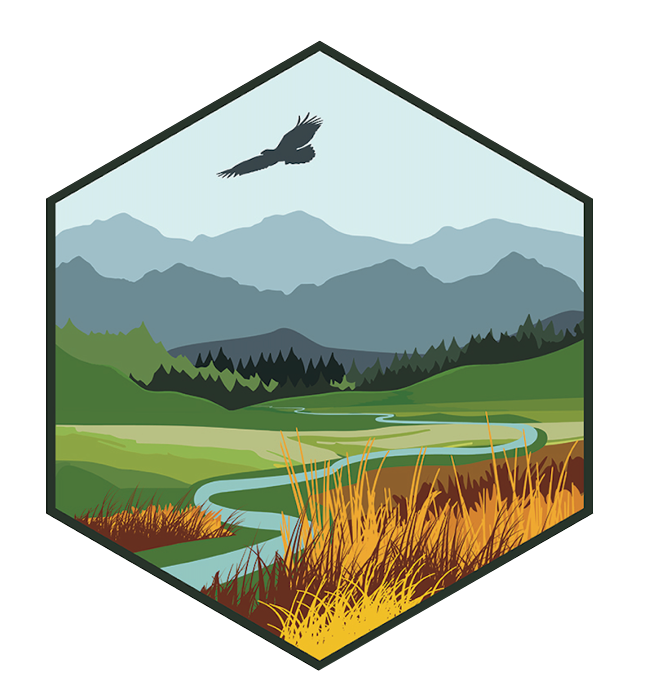The development of different energy balance models has allowed users to choose a model based on its suitability in a region. We compared four commonly used models—Mapping EvapoTranspiration at high Resolution with Internalized Calibration (METRIC) model, Surface Energy Balance Algorithm for Land (SEBAL) model, Surface Energy Balance System (SEBS) model, and the Operational Simplified Surface Energy Balance (SSEBop) model—using Landsat images to estimate evapotranspiration (ET) in the Midwestern United States. Our models validation using three AmeriFlux cropland sites at Mead, Nebraska, showed that all four models captured the spatial and temporal variation of ET reasonably well with an R2 of more than 0.81. Both the METRIC and SSEBop models showed a low root mean square error (<0.93 mm·day−1) and a high Nash–Sutcliffe coefficient of efficiency (>0.80), whereas the SEBAL and SEBS models resulted in relatively higher bias for estimating daily ET. The empirical equation of daily average net radiation used in the SEBAL and SEBS models for upscaling instantaneous ET to daily ET resulted in underestimation of daily ET, particularly when the daily average net radiation was more than 100 W·m−2. Estimated daily ET for both cropland and grassland had some degree of linearity with METRIC, SEBAL, and SEBS, but linearity was stronger for evaporative fraction. Thus, these ET models have strengths and limitations for applications in water resource management.
Correlative species distribution models are becoming commonplace in the scientific literature and public outreach products, displaying locations, abundance, or suitable environmental conditions for harmful invasive species, threatened and endangered species, or species of special concern. Accurate species distribution models are useful for efficient and adaptive management and conservation, research, and ecological forecasting. Yet, these models are often presented without fully examining or explaining the caveats for their proper use and interpretation and are often implemented without understanding the limitations and assumptions of the model being used. We describe common pitfalls, assumptions, and caveats of correlative species distribution models to help novice users and end users better interpret these models. Four primary caveats corresponding to different phases of the modeling process, each with supporting documentation and examples, include: (1) all sampling data are incomplete and potentially biased; (2) predictor variables must capture distribution constraints; (3) no single model works best for all species, in all areas, at all spatial scales, and over time; and (4) the results of species distribution models should be treated like a hypothesis to be tested and validated with additional sampling and modeling in an iterative process.
Evapotranspiration (ET) mapping at the Landsat spatial resolution (100 m) is essential to fully understand water use and water availability at the field scale. Water use estimates in the Colorado River Basin (CRB), which has diverse ecosystems and complex hydro-climatic regions, will be helpful to water planners and managers. Availability of Landsat 8 images, starting in 2013, provides the opportunity to map ET in the CRB to assess spatial distribution and patterns of water use. The Operational Simplified Surface Energy Balance (SSEBop) model was used with 528 Landsat 8 images to create seamless monthly and annual ET estimates at the inherent 100 m thermal band resolution. Annual ET values were summarized by land use/land cover classes. Croplands were the largest consumer of “blue” water while shrublands consumed the most “green” water. Validation using eddy covariance (EC) flux towers and water balance approaches showed good accuracy levels with R2 ranging from 0.74 to 0.95 and the Nash–Sutcliffe model efficiency coefficient ranging from 0.66 to 0.91. The root mean square error (and percent bias) ranged from 0.48 mm (13%) to 0.60 mm (22%) for daily (days of satellite overpass) ET and from 7.75 mm (2%) to 13.04 mm (35%) for monthly ET. The spatial and temporal distribution of ET indicates the utility of Landsat 8 for providing important information about ET dynamics across the landscape. Annual crop water use was estimated for five selected irrigation districts in the Lower CRB where annual ET per district ranged between 681 mm to 772 mm. Annual ET by crop type over the Maricopa Stanfield irrigation district ranged from a low of 384 mm for durum wheat to a high of 990 mm for alfalfa fields. A rainfall analysis over the five districts suggested that, on average, 69% of the annual ET was met by irrigation. Although the enhanced cloud-masking capability of Landsat 8 based on the cirrus band and utilization of the Fmask algorithm improved the removal of contaminated pixels, the ability to reliably estimate ET over clouded areas remains an important challenge. Overall, the performance of Landsat 8 based ET compared to available EC datasets and water balance estimates for a complex basin such as the CRB demonstrates the potential of using Landsat 8 for annual water use estimation at a national scale. Future efforts will focus on (a) use of consistent methodology across years, (b) integration of multiple sensors to maximize images used, and (c) employing cloud-computing platforms for large scale processing capabilities.
We reviewed existing and planned adaptation activities of federal, tribal, state, and local governments and the private sector in the United States (U.S.) to understand what types of adaptation activities are underway across different sectors and scales throughout the country. Primary sources of review included material officially submitted for consideration in the upcoming 2013 U.S. National Climate Assessment and supplemental peer-reviewed and grey literature. Although substantial adaptation planning is occurring in various sectors, levels of government, and the private sector, few measures have been implemented and even fewer have been evaluated. Most adaptation actions to date appear to be incremental changes, not the transformational changes that may be needed in certain cases to adapt to significant changes in climate. While there appear to be no one-size-fits-all adaptations, there are similarities in approaches across scales and sectors, including mainstreaming climate considerations into existing policies and plans, and pursuing no- and low-regrets strategies. Despite the positive momentum in recent years, barriers to implementation still impede action in all sectors and across scales. The most significant barriers include lack of funding, policy and institutional constraints, and difficulty in anticipating climate change given the current state of information on change. However, the practice of adaptation can advance through learning by doing, stakeholder engagements (including "listening sessions"), and sharing of best practices. Efforts to advance adaptation across the U.S. and globally will necessitate the reduction or elimination of barriers, the enhancement of information and best practice sharing mechanisms, and the creation of comprehensive adaptation evaluation metrics.
Species distribution models (SDM) are used to help understand what drives the distribution of various plant and animal species. These models are typically high dimensional scalar functions, where the dimensions of the domain correspond to predictor variables of the model algorithm. Understanding and exploring the differences between models help ecologists understand areas where their data or understanding of the system is incomplete and will help guide further investigation in these regions. These differences can also indicate an important source of model to model uncertainty. However, it is cumbersome and often impractical to perform this analysis using existing tools, which allows for manual exploration of the models usually as 1-dimensional curves. In this paper, we propose a topology-based framework to help ecologists explore the differences in various SDMs directly in the high dimensional domain. In order to accomplish this, we introduce the concept of maximum topology matching that computes a locality-aware correspondence between similar extrema of two scalar functions. The matching is then used to compute the similarity between two functions. We also design a visualization interface that allows ecologists to explore SDMs using their topological features and to study the differences between pairs of models found using maximum topological matching. We demonstrate the utility of the proposed framework through several use cases using different data sets and report the feedback obtained from ecologists.
Historical (1984-2014) Landsat-based ET maps were generated for Palo Verde Irrigation District (PVID) and eight other sub-basins in parts of Middle and Lower Central Valley, California. A total of 3,396 Landsat images were processed using the Operational Simplified Surface Energy balance (SSEBop) model that integrates weather and remotely sensed images to estimate monthly and annual ET within the study areas over the 31 years. Model output evaluation and validation using gridded-flux data and water balance ET approaches indicated relatively strong association between SSEBop ET and validation datasets. Historical trend analysis of seven agro-hydrologic variables were done using the Seasonal Mann-Kendall test.
Level 3 soil moisture datasets from the recently launched Soil Moisture Active Passive (SMAP) satellite are evaluated for drought monitoring in rangelands.Validation of SMAP soil moisture (SSM) with in situ and modeled estimates showed high level of agreement.SSM showed the highest correlation with surface soil moisture (0-5 cm) and a strong correlation to depths up to 20 cm.SSM showed a reliable and expected response of capturing seasonal dynamics in relation to precipitation, land surface temperature, and evapotranspiration.Further evaluation using multi-year SMAP datasets is necessary to quantify the full benefits and limitations for drought monitoring in rangelands.
In this study, we combined two actual evapotranspiration datasets (ET), one obtained from a root zone water balance model and another from an energy balance model, to partition annual ET into green (rainfall-based) and blue (surface/groundwater) water sources. Time series maps of green water ET (GWET) and blue water ET (BWET) are produced for the conterminous United States (CONUS) over 2001–2015.
Analysis of the relationship between evapotranspiration (ET) and its natural and anthropogenic drivers is critical in water-limited basins such as the Nile. The spatiotemporal relationships of ET with rainfall and vegetation dynamics in the Nile Basin during 2002–2011 were analyzed using satellite-derived data. Non-parametric statistics were used to quantify ET-rainfall interactions and trends across land cover types and subbasins. We found that 65% of the study area (2.5 million km2) showed significant (p < 0.05) positive correlations between monthly ET and rainfall, whereas 7% showed significant negative correlations. As expected, positive ET-rainfall correlations were observed over natural vegetation, mixed croplands/natural vegetation, and croplands, with a few subbasin-specific exceptions. In particular, irrigated croplands, wetlands and some forests exhibited negative correlations. Trend tests revealed spatial clusters of statistically significant trends in ET (6% of study area was negative; 12% positive), vegetation greenness (24% negative; 12% positive) and rainfall (11% negative; 1% positive) during 2002–2011. The Nile Delta, Ethiopian highlands and central Uganda regions showed decline in ET while central parts of Sudan, South Sudan, southwestern Ethiopia and northeastern Uganda showed increases. Except for a decline in ET in central Uganda, the detected changes in ET (both positive and negative) were not associated with corresponding changes in rainfall. Detected declines in ET in the Nile delta and Ethiopian highlands were found to be attributable to anthropogenic land degradation, while the ET decline in central Uganda is likely caused by rainfall reduction.
Most of the western United States is experiencing the effects of rapid and directional climate change (Garfin et al. 2013). These effects, along with forecasts of profound changes in the future, provide strong motivation for resource managers to learn about and prepare for future changes. Climate adaptation plans are based on an understanding of historic climate variation and their effects on ecosystems and on forecasts of future climate trends. Frameworks for climate adaptation thus universally identify the importance of a summary of historical, current, and projected climates (Glick, Stein, and Edelson 2011; Cross et al. 2013; Stein et al. 2014). Trends in physical climate variables are usually the basis for evaluating the exposure component in vulnerability assessments. Thus, this chapter focuses on step 2 of the Climate-Smart Conservation framework (chap. 2): vulnerability assessment. We present analyses of historical and current observations of temperature, precipitation, and other key climate measurements to provide context and a baseline for interpreting the ecological impacts of projected climate changes.

